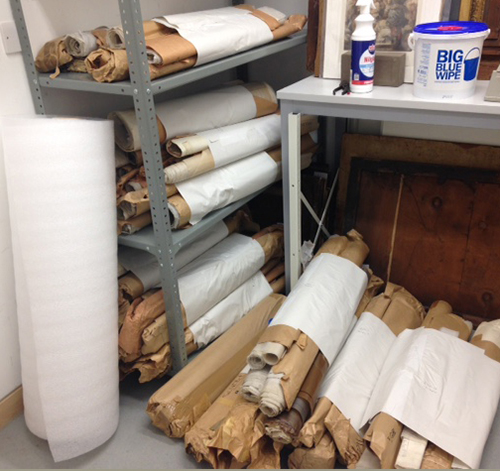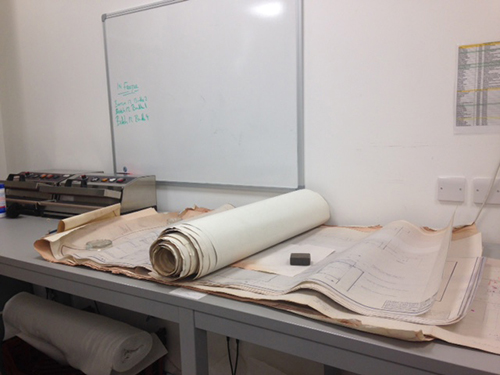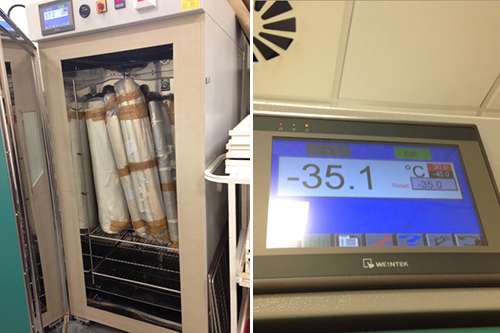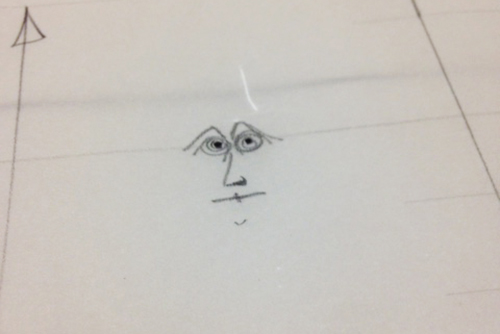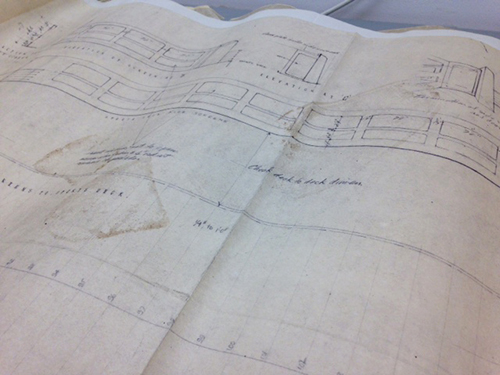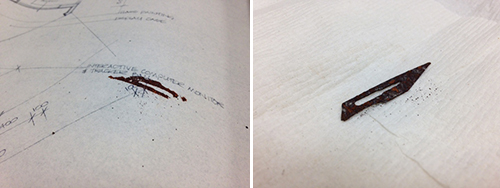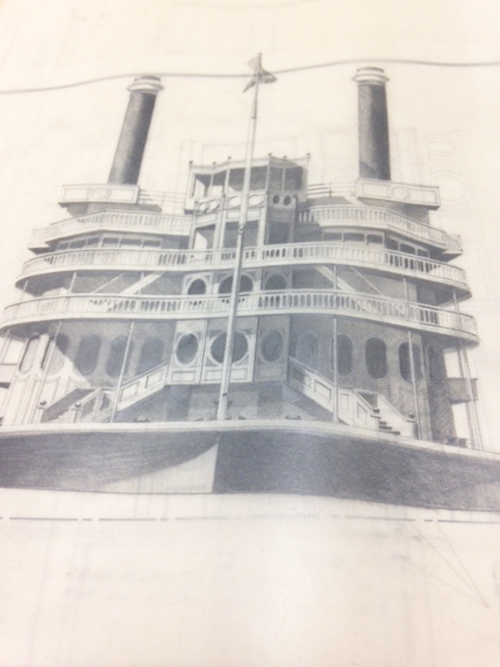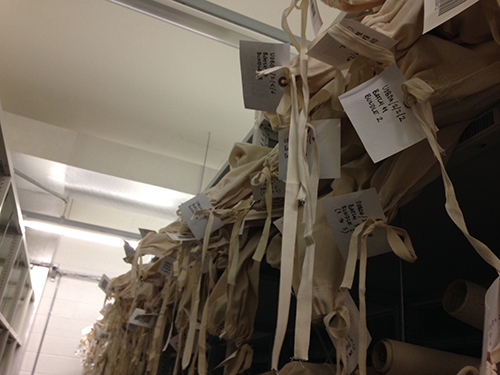James Gardner’s plans
Where do I start with this blog? Slightly nervous coming back to this after such a long absence… There have been several projects on the go after I last wrote anything, and there are always loose-ends-a-plenty hanging around to be tied up. In other words, it has all been a little on the hectic side!
To cut straight to the chase, an exciting new project finally properly got off the ground towards the end of 2015. Over a period of time, I have been going through the James Gardner Archive, trawling through the materials within it and making contents list after contents list while feeding the database with new information. The Gardner materials we have here in the Design Archives are also complemented by a vast collection of large format architectural plans and drawings on several types of paper – including transparent papers. These plans have so far been stored off-site where access and conditions were an issue. To make the situation at hand a whole lot better, the Design Archives embarked on a project with The Keep. Working with Conservator Melissa Williams and Conservation Assistant Kristy Woodruffe, I have been kept busy dealing with these plans…
The rolled up materials were stored in ‘project bundles’. We started this rather daunting project by making a basic listing on their contents, going by what was written on the brown paper the plans were wrapped in.
These bundles were transported, as they were, to the conservation quarantine room at The Keep, from where Kristy and I begun the somewhat painstaking process of going through them.
The first stage was to unroll the plans a section and a bundle at a time. As opposed to assessing each plan individually, the materials were assessed as the groups they had been organised in. Each individual plan was then vacuumed with Hepavac vacuum cleaners (recto AND verso!) to remove dirt and possible mould particles – and I can reveal that this was no easy task considering the size and the rolled nature of them! It proved a challenge to have large enough table spaces to accommodate the handling of the plans and numerous weights were needed to stop the plans from pinging back to their rolled states during the vacuuming.
For ease of storage in terms of space, we made the decision to keep the plans rolled up at this stage. No conservation attention was paid to individual plans either, due to the sheer volume and workload of this project. After vacuuming, the plans were rolled back up in their original groupings and wrapped up tightly in plastic sheeting.
These ‘parcels’ were then placed in the conservation blast freezer (there are two, called Jen and Brian – long story), which take the temperature down to -35c very quickly. Each of the five loads stayed in the freezer for 7 days. After this cold spell, the plans were taken out of their plastic wraps and placed on blotters in the drying room to thaw thoroughly.
There were some interesting obstacles we came across during the vacuuming of the plans. Some of the plans were ‘stacked’ together with paperclips, staples or split pins.
All metal additions (mostly very rusty) were removed prior to placing the materials in the freezer and replaced by brass paperclips (where able) or re-bound using thread. For this particular stack of plans we used thread to simply rebind it and keep the pages together as intended.
One of the big issues with the plans was mould. All the plans were stored in the same space, which means they all needed to be treated – those mould particles get everywhere! Thankfully there was only a small percentage of the plans that had been visibly affected by mould where the paper had become pregnated with it. This made those items a lot more fragile, as the structure of the paper had become a lot softer.
On the more light-hearted side, I spotted this little doodle on one of the architectural plans on transparent paper. It would be suffice to say that the facial expression portrayed in this reflected the way we felt on most days when battling on with the plans… It’s all in the eyes!
We also came across a handful of plans with rather large shoeprints on them – Gardner’s perhaps?
There was also one particularly nasty surprise which could have developed into a serious incident had we not spotted it in time. Inside one of the rolls there was an incredibly rusty scalpel blade in hiding…! It has now left a permanent mark on one of the plans but the offending article itself was disposed of in the suitable manner.
There were also some amazing drawings amongst the plans and in some sense it is a real shame these materials haven’t been listed in detail at this point – this was just not a sensible use of resources and time. Below is an example of one of the stunning pencil drawings on tracing paper we found amongst the rather monotonous plans – this one is a drawing of the Delta Steamboat Company Mississippi Queen, which was one of the projects Gardner worked on in the early 1970s.
The tally for the number of plans now labelled and stored neatly rolled up in archival Calico bags in one of the strong rooms at The Keep stands at an eye-watering 7,421. I am yet to amend our catalogue with the information that has come out of this project in connection to Gardner’s projects, but it is all coming together very nicely indeed!

